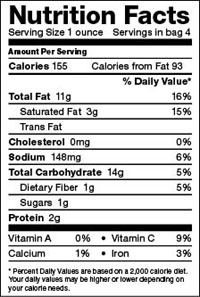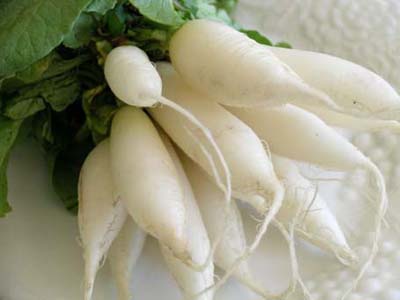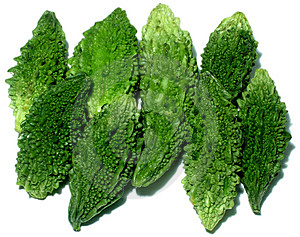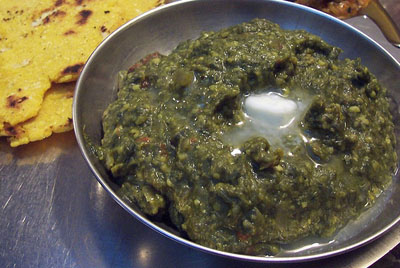
Philosophy Of Food
Author - Anil Chawla

|
Philosophy Of Food
|
Food is fundamental to human existence. Attitudes to food vary across societies, cultures and even persons. In the rich countries of Europe and America, food is an essential part of luxurious living. There is a massive amount of glamour, sensuality, aesthetics, fashion and even sex-appeal associated with foods in such countries. Poor countries have a mixed society with the haves imitating the lifestyles of Americans and the have-nots barely managing to keep body and soul together. Media in rich as well as poor countries is full of advertisements and editorial content (much of it sponsored) singing virtues about some food or the other - in the process adding to the all-round confusion.
To understand the genesis of confusion about food in modern western world, one has to understand five underlying factors. First and foremost factor is the vacuum in the paradigm of modern medicine about role of food. Modern medicine treats human body as a territory which can be attacked by various external agents or microorganisms like bacteria, virus etc. The paradigm is of warfare between the territory and external agents; with focus of medicine on destruction of attackers. The underlying theme is that the territory plays a passive role and all that needs to be done is to act against the malicious attackers. The role of the territory (under attack) is never questioned. This paradigm of modern medicine is based on a philosophical view of each man as separate from world around him and exploiting all that the world offers to the fullest. In this view each individual is an island and is not an integral part of nature and there are no undefined connections that characterize the relationship of man with nature. This paradigm has been successful in helping mankind fight against some diseases like smallpox but we now know that there are many diseases that are a mystery for modern medicine. In the paradigm of warfare-and-attackers the role of food is neither understood nor seen as critical. Food is seen as a matter of freedom / personal choice in which a medical practitioner is not supposed to normally interfere. Reasons for this view of food are never stated but let us not ignore that modern medicine is based on the culture of making profits from sufferers and prevention of disease always takes a backseat in relation to the objective of maximizing profits.
The second factor about food in modern western world relates to the history of Europe and America. Christianity was spread in Europe, from about 1000 AD onwards, with much cruelty and ruthlessness. Church helped Kings conquer the people by controlling the minds of the people. Traditional beliefs (called pagan) were the biggest threat to the hegemony of the Church. Thousands or may be millions of practitioners of traditional belief-systems were beaten, tortured and killed in the most brutal manner possible under the names of witch hunting and inquisitions. Traditional medicine was treated as witchcraft and all those suspected to be practicing it even in the privacy of their homes were killed. The same story was repeated with much more ferocity in Americas and also in Africa. The damage that this did to traditional knowledge and systems of medicine and food has never been documented. I use the two words food and medicine together because in all traditional systems, the two were never separated like it is done in modern medicine, which has inherited the Church's disdain for everything traditional.
The third factor is the analytic-mechanistic approach that was characteristic of scientific methodology till half a century ago. Let us take an extreme example. A few centuries down the line, suppose some aliens visit the earth and find a box (which was actually in its heydays the CPU of a PC). The aliens take the computer box back home. With their very well-developed skills in chemistry, they are able to easily grind the box to fine dust and analyze the elemental composition of the box right to the ninth decimal place (something that human beings of 21st century might find difficult to do). But can such analysis serve any useful purpose in understanding the CPU of a computer? Present-day food scientists tend to adopt the same silly approach with analysis of food and food ingredients. Every food product is inherently so complex that a complete analysis is almost impossible. Even if one knows that 99.99 per cent of the ingredients of a food are extremely good, it may not mean much if the balance 0.01 per cent is Potassium Cyanide. Powerful poisons even if present in the ratio of one part in million may overpower all the goodness that other ingredients might bring. Moreover, physical form of the food and its internal structure at the time of ingestion plays an important role in the way the food is treated by the body. The key is to adopt a holistic approach and study the effect of the food as a whole in the form that it is consumed. For example, if one studies carrots one must distinguish between boiled and fried carrots since the two may produce opposite effects on human body. But that is not the approach of a modern food scientist serving the interests of multi-billion-dollar corporate houses. The scientist does not study to enhance health of millions; he only aims to extract some chemical from carrot which can be sold at a substantial premium. To sum up the third factor underlying the confusion about food, one can say that the attempt to split every food into independent components / ingredients combined with the profit motive of scientific establishments is playing havoc.

The fourth factor is the underlying assumption about man. Modern science has the dogma about all men being same. Any classification of human beings on the basis of personality types / attitudes is anathema. Food and medicine are supposed to be the same for all human beings irrespective of any considerations of age, nationality, race, creed, gender, character, type of employment, psychological state, culture, etc. How this assumption came into vogue is not known!
The fifth factor is an extension of the fourth. Just as science turns a blind eye to differences among human beings, it chooses to ignore all that is changing in the external environment. It might appear common sense to you and me that a man in Iceland must eat differently as compared to a man in Sahara, but that is not the way it appears to scientists. Hence, universal recommendations / advisories are issued without taking into account environmental parameters like humidity, temperature, sunlight etc. Government of India advertises that children up to the age of six months should not be given anything except mother's milk - even water is strictly prohibited. I have asked many pediatricians about the research that has been conducted to back this advice to young parents. All the doctors throw a lot of logic at me, but fail to produce any large-scale research that has been conducted in a desert where humidity levels were near zero and temperature was soaring above 40 Celsius. They say that the government directive is based on WHO recommendations - as if that can be a substitute for genuine research.
On top of the five factors that muddle up modern world's perspective is something more philosophical. Modern doctors have no understanding of existentialism and philosophy. But the existentialist questions about human life are too important to be ignored. One's attitude to foods and beverages is determined by the way one has answered the fundamental questions about purpose of life. Does one live to eat or does one eat to live? Should one eat to satisfy one's desires or should one eat because living is a virtue for which food is essential or should one eat because one has to live to achieve a higher purpose? Modern man has no ready answers to these questions from any reliable authoritative source. From a hedonistic perspective one might argue that a short life with good rich foods and exotic drinks is much better than a long life with tasteless foods without any alcoholic drinks. This hedonistic view is never expressed explicitly, but it is the underlying message in all the food, drink and tobacco advertisements. From the moment a person can understand language, he is bombarded with ads that sing virtues of rich unhealthy foods and drinks (and also harmful substances like tobacco). In the media, eating a pizza or a burger or having a brand of a drink or smoking a particular brand of cigarettes is touted as a virtue worth dying for while good health and peaceful relaxed life are rarely talked about. Western thinkers, scientists and philosophers never state it explicitly but the fact is that the present day man is indoctrinated into believing that the purpose of food is to have a good time. There are a large number of food authors in every part of the world including India who talk about how one can maximize one's pleasures from food. These pleasures, one is told, include taste, aesthetics, ego-pampering, sensuality and even eroticism (please do not ask me how). This is directly opposite to what has been the traditional view in most cultures (to be precise, in pagan cultures). Traditionally, food was supposed to be a means towards good health - physical, mental and spiritual. In contrast, modern consumerist culture treats food as an end in itself and not as a means towards an end.
Holistic cultures (like Hinduism, Buddhism, Confucianism, Taoism and Shintoism etc.) treat man as a part of the world and not as a stand-alone entity. Each individual plays a number of roles. The individual's life derives purpose from the roles that one plays. Living life to the fullest in this view of life is based on living out each role to the fullest. One who has not been blessed with children is viewed as someone who has not lived his life to the fullest. Similarly, one's ability to do good in one's professional life is seen as essential for full enjoyment of one's life. A teacher who cannot teach due to some adverse circumstances is unfortunate. A carpenter who makes furniture that makes him proud is enjoying his life. Food is essential to sustain life. From a holistic perspective, moving beyond mere sustenance, food helps one achieve physical, mental and spiritual health as well as the strengths and qualities that one needs to play every role that makes one's life complete. Whether one wants to be a soldier or teacher or blacksmith or farmer or sweeper or businessman, the food that one eats must help one to excel in the respective field. Beyond the professional world, food must help one in playing every other role that one has to perform in life - son / daughter, father / mother, husband / wife, brother / sister and so on.
When one takes the above view of life and purpose of food, there is a vast difference that comes about in one's attitude to food. Taste and mouth-feel are no longer the primary focus areas. What the food does is more important than how it tastes or looks or feels. In all cultures, teaching children to eat foods that they do not relish is an essential part of parental duties. Across the world, eating together and sharing food is encouraged to build family and social bonds. Whether in the matter of encouraging children or sharing food, the basic focus is on the effects of food. In the former case, the focus is on physical health. In the latter case, the role of food in building emotional bonds is emphasized. In India, we are used to a culture of eating same food when eating together – eating different items is a clear no-no. This often creates problems when people from different backgrounds go out for meals, but there is always a genuine attempt to arrive at a consensus. On my first trip to Europe, I did not know that in Europe each one eats what one likes without bothering for the other. After a business lunch with my hosts, when the time came for desserts, I wanted to see their choices before speaking my mind and hence showed hesitation. My courteous hesitation was taken as a negation and the host ordered ice cream for himself and his colleague. In most parts of the world (excluding Europe and America), this will amount to gross discourtesy on part of the host. In Europe and America, one eats because one wants to - togetherness is incidental. In other cultures, when eating in a group one eats to build relationships, everything else is incidental.
Coming back to the mantra of concentrating on what food does, let us go back to the paradigm of western medicine which treats disease as a fight between a territory and its attackers. Ayurved, Indian system of medicine, as well as most pagan systems of medicine do not focus on external attackers. The primary focus for ensuring a healthy individual is the balance between different constituents and the strength of human systems (including complete body, mind and spirit) as a composite whole. Weaknesses and imbalances are said to be the main defects that need to be corrected. Diseases appear only as external manifestations of internal problems. Curing the disease without correcting the underlying causes is seen as unbecoming of a true doctor. It is important to understand that this is a different paradigm altogether. The building blocks of this holistic paradigm are vastly different from those of western medical practice. One is no longer looking for micro-organisms / pathogens which are practically innumerable and are constantly evolving.
To define the essential disease-causing-characteristics (dosh's) ayurved specifies three essential parameters - vaat, pitt and kaf. The three are always present in every human body in natural form and are in a state of balance in a healthy body. Disturbing the balance between the three is the primary cause of disease. In this article, we are not discussing the definitions of vaat, pitt and kaf. However, to get an idea the following features of the three can be mentioned in brief: Vaat - dry, cold, fine, light and mobile; Pitt - oily, warm, fluid, acidic, pungent and sharp; Kaf - heavy, cold, soft, oily, sweet, immobile. Broadly speaking, twenty types of diseases are said to be the result of kaf imbalance, forty types of diseases due to pitt disturbance and eighty types of diseases are caused by vaat. Moreover, in general kaf diseases are predominant in age-group up to 20 years; pitt diseases are prominent in age-group of 20-40 years and vaat diseases are common in persons aged 40+.
Different types of foods were studied by ancient researchers with regard to the effect that each food had on vaat, pitt or kaf. Foods are classified on the basis of taste category by a concept called ras. The categories are sweet, sour, salty, pungent (like pepper), bitter and astringent. In general, sweet, acidic and salty foods tend to control vaat disturbance; sweet, bitter and astringent foods tend to control pitt disturbance; while astringent, bitter and pungent tend to control kaf disturbance. On the other hand, generally speaking, bitter, pungent and astringent foods aggravate vaat disturbance; pungent, acidic and salty foods aggravate pitt disturbance; while sweet, acidic and salty foods aggravate kaf disturbance. These are however general guidelines only and specific guidelines were formulated for each specific item of food. For example, it is mentioned that radish (mooli) when tender controls all the three vaat-pitt-kaf, but aggravates all three when ripened and aged. It is beyond the scope of this article to elaborate on the effects that different foods have on the three dosh's. The point that is central to understanding of food is to keep in mind the conceptual framework of the three dosh's and to develop one's own experience-based knowledge of the effect that each specific food has on oneself.

When studying the effects of food on one's body in terms of the three dosh's, it is important to keep in mind the effect that seasons have on human body. During winter, human body is different from summer - so it is natural that foods consumed in winter should be different from the foods of summer. Recommended foods for winter are foods that are sweet, acidic and salty. One should not consume pungent, bitter and astringent foods during winter. Since digestion power is at its maximum during winter, it is recommended that light and easy-to-digest foods should be avoided during winter. Alcohol, vinegar and meat consumption are recommended for winter. Traditional foods of countries like China (that have long severe winters) exhibit all the above characteristics. Chinese food is traditionally not as well-cooked as Indian food and uses high amount of vinegar and meats while avoiding liberal use of chilies and such pungent foods. This is exactly what one would have expected based on the three dosh's model.
Geographic peculiarities and climatic variations led to different styles of food being developed even across India. The climate in Tamil Nadu is different from the climate in Punjab. So it is logical that food of Tamil Nadu is vastly different from the food of Punjab. Unfortunately, we have lost the experts who could explain the rationale for the differences in foods of different regions. One hopes that in years to come as understanding of the holistic paradigm of food develops, it should be possible to once again understand what our ancestors knew very well.
Not too long ago, within the country's traditional cuisine of each region, there were clearly established rules that prescribed methods for aligning one's food habits with seasons. In ayurved, it is called RITUCHARYA. There are detailed rules about different types of foods and seasons. For example, ghee or butter is recommended for most of the months of the year except during spring and during the period when rainy season is just getting over; bitter gourd (karela) is prohibited during winter. Each such recommendation is based on clear reasoning. Nevertheless, one should not accept such prescriptions blindly and one must study for oneself such effects.

In addition to season-based rules, there are rules for consumption of different foods at different times of the day. For example, it is prohibited to consume some foods during evening -- use of curd during night time is prohibited. Once again, it must be emphasized that constant research is needed to verify the effect that consumption of each food at certain times of the day has on human body, given the geographic and climatic peculiarities of different places.
Of course, while all other factors are being considered age of the person consuming food cannot be ignored. An old person must avoid foods that aggravate vaat, while a person in the age group of 20-40 must avoid foods causing pitt.
In addition to age, persons vary in their nature. Some are more prone to vaat disorders, for some pitt is the problem, while for some others kaf is the troublemaker. Selection of food by a person should take this also into account.
In addition to the three dosh's human body has many constituents - bones, muscles, blood, fat etc. Each food has different effects on these constituents. While controlling dosh's is important it is also necessary to build strength. Effects of different foods on building body constituents need to be studied. Sometimes there are foods that aggravate all three dosh's but build strength of muscles and bones. Such foods are cooked with substances that control dosh's. Red kidney bean (rajmah) is an example of a food that causes all three dosh disorders. Yet, rajmah is consumed in North India with liberal doses of ghee and spices that neutralize the dosh's to some extent. Similarly, mustard leaves (sarson ka saag) causes all three dosh's but is consumed during the extreme winter of Punjab with liberal quantity of ghee with garlic by the hardworking farmer-folks.

In addition to muscle building, ayurved recognizes healthy libido as an essential indicator of good health. Traditional texts clearly mention about foods that build sexual capacity. This is a feature that differentiates the holistic approach of India from the Christian-dominated western approach. In Hindu religion, sex is neither a sin nor something to feel guilty about. This is well reflected in the study of food.
Just as one cannot ignore sex when looking at life in its totality, one cannot ignore mind and spirit when talking of food. Human beings have been classified into four categories (varna) based on their swabhav or aptitude. One's aptitude is something that one is born with, but it is not something that one inherits for sure from one's father / mother. The varna system should not hence be confused with the inflexible iron walls of caste system. Ideally speaking, aptitude should determine one's occupation, vocation and profession. Sat, rajas and tamas are three mental qualities that affect one's mental make-up. A Brahmin or a person engaged in intellectual pursuits must aim to enhance sat, while a kshatriya or a soldier should aim for enhancing rajas and tamas. Some foods enhance tamas in human body, hence they are banned for Brahmins, but are strongly recommended for kshatriyas / soldiers. Meats, onion and garlic are examples of such foods. The underlying philosophy is that one can attain self-realization by enhancing the natural aptitude and qualities that one is born with. This also fits with the basic philosophy of purpose of life that we discussed earlier. If one is born to be a soldier, one shall achieve the ultimate joy in life by being a good soldier; so one must eat foods that build the body, mind and spirit necessary for being a soldier.
There is a misconception that Indian religion, philosophy and medicine lays emphasis on vegetarianism. Nothing can be farther from truth. Traditional Indian texts on food and medicine describe in detail effects of almost every type of meat including cow, pig, sheep, goat, peacock, chicken, buffalo, deer, bear, tiger, dog, fish, crocodile etc.
Last but not the least, any talk about food cannot be complete without talking about excreta. Easy and complete cleansing of the intestine as well as easy urination is essential for good health. There are foods that bind and harden stools, while others make bowel movement smooth. Similarly, some increase urine flow and remove urinary problems. Planning for one's food must take into account the complete picture including aspects that cannot often be discussed in so-called courteous company (burping, flatus expulsion etc.).
Does all this sound too complex? Sure it does! Food, for traditional systems, is the first medicine. When a culture considers profiteering from suffering as the ultimate sin, the culture builds systems to minimize diseases. And in such a situation, emphasis is on healthy food - not glamorous food, not fancy food, not exotic food, and certainly not food that leads to maximum profits for a few. Food is central to building a society where healthcare is a right of every human being. Is the US President, Mr. Obama listening?
ANIL CHAWLA
3 February 2010
Please write to me your comments about the above article.
 samarthbharatparty@gmail.com
samarthbharatparty@gmail.com

ANIL CHAWLA is an engineer and a lawyer by qualification but a philosopher by vocation and a management consultant by profession.

Website developed and managed by

MF-104, Ajay Towers, E5/1 (Commercial),
Arera Colony,
Bhopal - 462016 INDIA

Copyright - All Rights Free